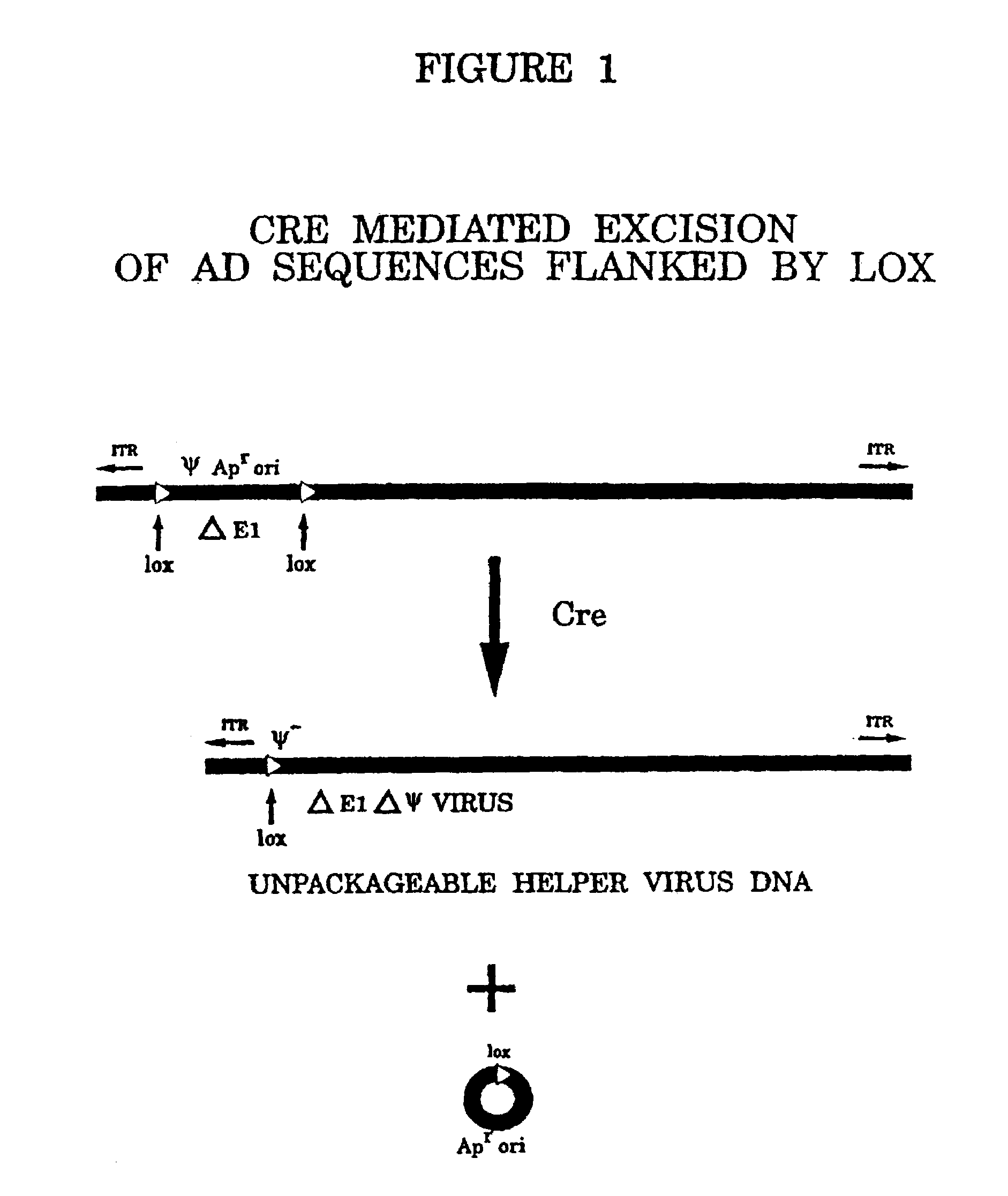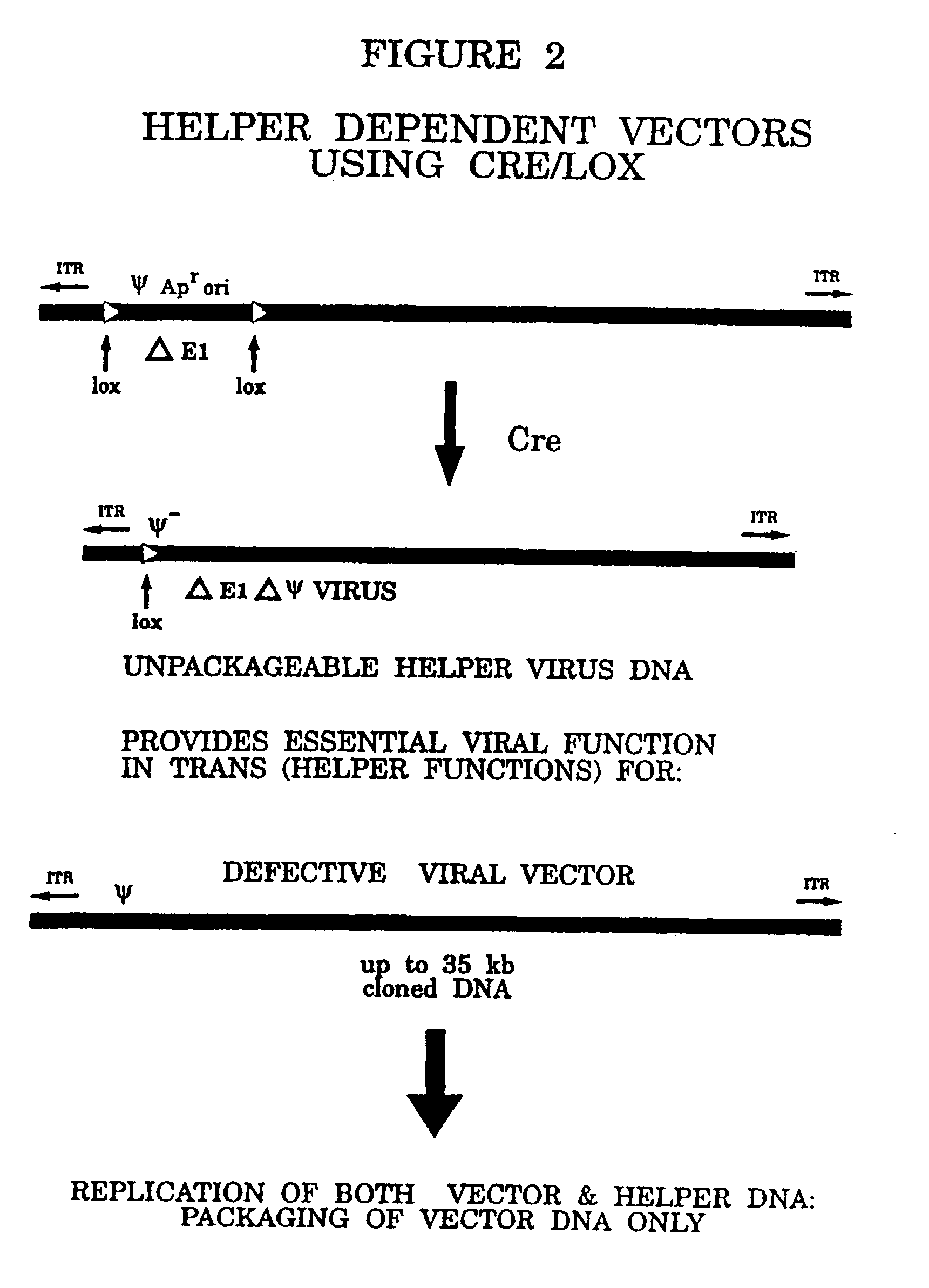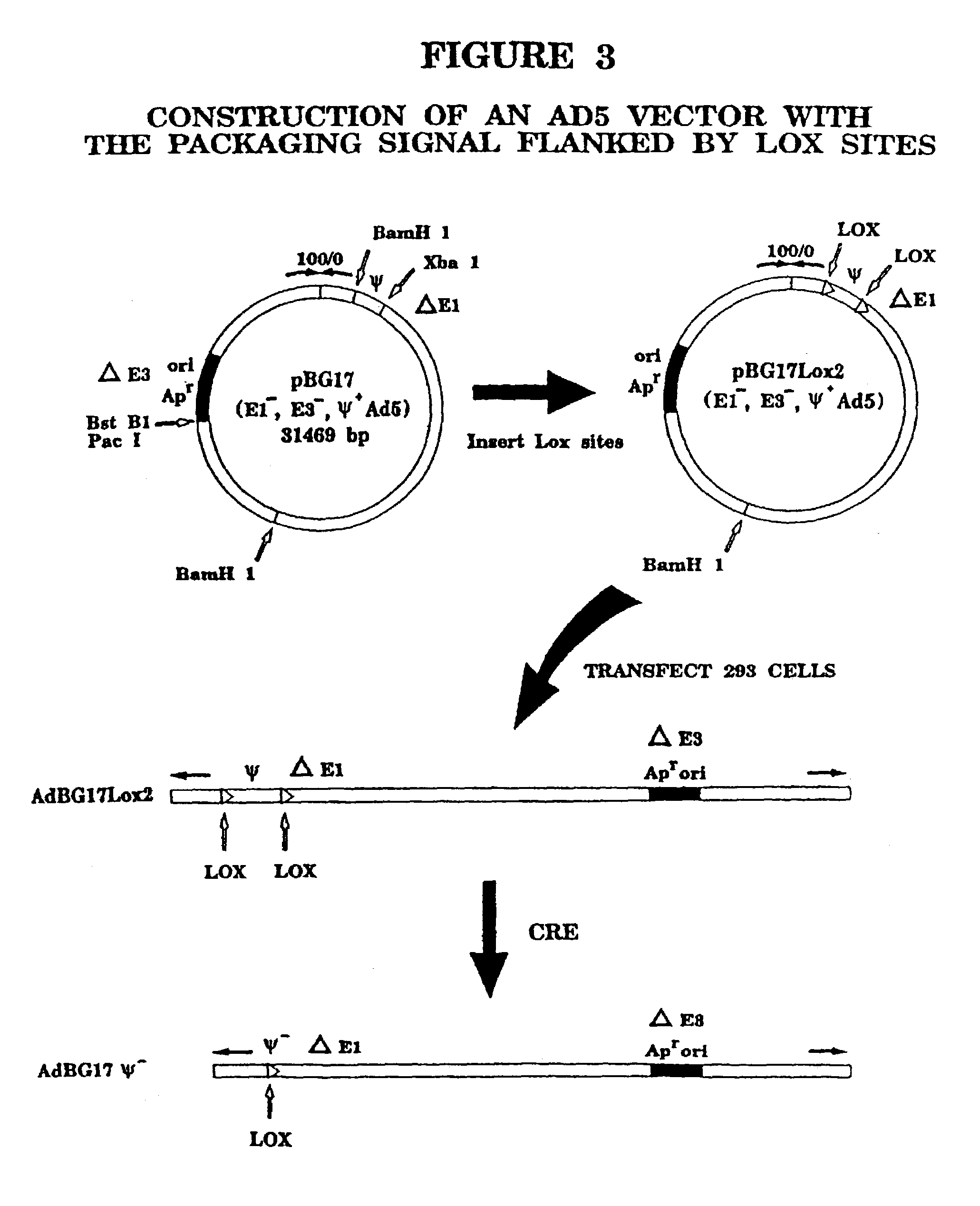Helper dependent adenovirus vectors based on integrase family site-specific recombinases
a technology of integrase family and adenovirus, which is applied in the field of adenovirus vectors, can solve the problems of limited capacity, toxic or other untoward effects, etc., and achieve the effect of simple and useful, high capacity
- Summary
- Abstract
- Description
- Claims
- Application Information
AI Technical Summary
Benefits of technology
Problems solved by technology
Method used
Image
Examples
example 1
An Adenoviral Vector Deleted for all Viral Coding Sequences Results in Enhanced Safety and Extended Expression of a Leptin Transgene
Experimental Synopsis and Conclusions Drawn:
[0065]Adenoviral (Ad) mediated in vivo gene transfer and expression are limited in part by cellular immune responses to viral-encoded proteins and / or transgene immunogenicity. In an attempt to diminish the former responses, we have previously developed and described helper-dependent (HD) Ad vectors in which the viral protein coding sequences are completely eliminated. These HD vectors have up to 37 kb insert capacity, are easily propagated in a Cre recombinase-based system, and can be produced to high concentration and purity (>99.9% helper-free vector). In this study, we compared safety and efficacy of leptin gene delivery mediated by an HD vector (HD-leptin) and a first-generation E1-deleted Ad vector (Ad-leptin) in normal lean and ob / ob (leptin-deficient) mice. In contrast to evidence of liver toxicity, inf...
example 2
[0089]The minimal FRT DNA sequence is a 34 bp DNA segment that is readily produced as a synthetic deoxyoligonucleotide that can be inserted into plasmid or viral DNA (see FIG. 12). To develop a simple and sensitive assay for FLP activity we constructed an adenovirus vector designated Adlucneofrt that contains an expression cassette comprising the murine cytomegalovirus immediate early gene promoter (MCMV IE Pr) followed by a DNA segment containing the neomycin resistance gene (neo) followed by the coding sequences for firefly luciferase and an SV40 polyadenylation signal. The neo sequences inserted between the MCMV IE PR and luciferase were flanked by FRT sites and were designed to prevent expression of luciferase unless said neo sequences arc excised by the site specific recombinase FLP. The structure of Adlucneofrt and the effect of FLP mediated recombination are illustrated in FIG. 13A. Removal of neo from the Adlucneofrt genome generates a new viral DNA, Adlucfrt, that is render...
example 3
[0090]An independent measure of the efficiency of excision of a DNA segment flanked by FRT sites was obtained by direct analysis of DNA structure using Southern blot analysis. Cells were infected with Adlucneofrt, Adlucfrt or were coinfected with Adlucneofrt and AdFLP and DNA was extracted 27 h post infection, digested with Stul or HindIII restriction enzymes, and transferred onto nitrocellulose membranes and probed with a labelled DNA that hybridized to neo and luciferase sequences. The structures of the Adlucneofrt virus and the probe are illustrated in FIG. 14A along with the structures of the products of FLP mediated recombination. The results of Southern blot hybridization analysis are presented in FIG. 14B. It is readily apparent from the DNA patterns in lanes 4, 7, 11 and 14 representing cells that were coinfected with Adlucneofrt and AdFLP that most of the Adlucneofrt DNA had undergone FLP mediated recombination to generate a left end Stul fragment of 6008 bp (lanes 4 and 7)...
PUM
| Property | Measurement | Unit |
|---|---|---|
| weight | aaaaa | aaaaa |
| weight | aaaaa | aaaaa |
| concentrations | aaaaa | aaaaa |
Abstract
Description
Claims
Application Information
 Login to View More
Login to View More - R&D
- Intellectual Property
- Life Sciences
- Materials
- Tech Scout
- Unparalleled Data Quality
- Higher Quality Content
- 60% Fewer Hallucinations
Browse by: Latest US Patents, China's latest patents, Technical Efficacy Thesaurus, Application Domain, Technology Topic, Popular Technical Reports.
© 2025 PatSnap. All rights reserved.Legal|Privacy policy|Modern Slavery Act Transparency Statement|Sitemap|About US| Contact US: help@patsnap.com



